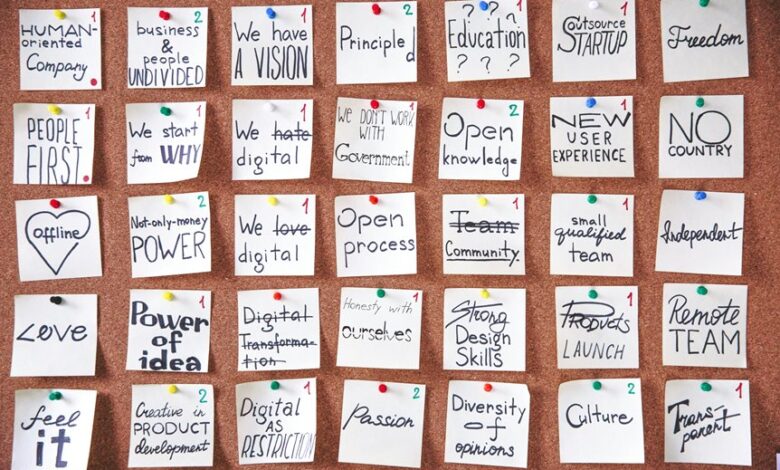Designing Organizational Culture 3451736943

Designing organizational culture is a strategic endeavor that requires a nuanced understanding of various dynamics at play. Leaders must evaluate how cultural values align with organizational goals. This process involves assessing current practices and identifying areas for improvement. A structured approach can lead to a more engaged workforce. However, the complexities of human behavior and organizational structures pose challenges. What specific strategies can leaders employ to ensure a successful transformation?
Understanding Organizational Culture
Organizational culture serves as the invisible framework that shapes employee behaviors, decision-making processes, and overall workplace dynamics.
It is defined by cultural values that promote trust, collaboration, and innovation. High employee engagement emerges when individuals align with these values, fostering a sense of belonging and autonomy.
Understanding this culture enables organizations to strategically enhance productivity and satisfaction, creating an environment conducive to freedom and creativity.
The Role of Leadership in Shaping Culture
Although leadership is often seen as a top-down approach, it plays a crucial role in shaping and nurturing organizational culture through active engagement and modeling desired behaviors. Different leadership styles can significantly influence cultural values, fostering an environment conducive to innovation and collaboration.
| Leadership Style | Impact on Cultural Values |
|---|---|
| Transformational | Encourages creativity |
| Transactional | Promotes stability |
| Servant | Fosters community |
Key Elements of a Positive Workplace Environment
A positive workplace environment is characterized by several key elements that collectively enhance employee satisfaction and productivity.
Central to this are high levels of employee engagement, where individuals feel valued and heard.
Additionally, fostering workplace diversity promotes a sense of belonging, encouraging collaboration and creativity.
Together, these elements create a dynamic atmosphere that empowers employees to thrive and contribute meaningfully to organizational goals.
Strategies for Implementing Cultural Change
Implementing cultural change requires a strategic approach that aligns with the organization’s vision and values. Key strategies include fostering employee engagement through active participation and utilizing effective communication strategies to ensure transparency.
| Strategy | Description |
|---|---|
| Leadership Commitment | Ensure leaders model desired culture |
| Training Programs | Equip employees with necessary skills |
| Feedback Mechanisms | Create channels for open dialogue |
| Recognition Systems | Reward behaviors that align with values |
| Continuous Evaluation | Regularly assess cultural alignment |
Measuring and Assessing Organizational Culture
Measuring and assessing organizational culture is vital for understanding the effectiveness of implemented cultural changes.
Employing robust culture assessment methodologies and measurement tools allows organizations to quantitatively gauge employee perceptions and behaviors. This strategic evaluation fosters collaboration and informs leadership on necessary adjustments, ultimately enhancing organizational freedom.
Case Studies of Successful Cultural Transformation
While numerous organizations face challenges in cultural transformation, several have successfully navigated this complex process, showcasing effective strategies and outcomes.
Case studies reveal that these organizations prioritized open communication, employee engagement, and adaptive leadership.
By fostering an environment of trust, they empowered individuals to embrace change, ultimately leading to enhanced performance and innovation.
Such transformations illustrate the potential for a liberated organizational culture.
Conclusion
In conclusion, designing organizational culture is not merely a task but a monumental endeavor that can transform workplaces into vibrant ecosystems of creativity and trust. Leaders play a pivotal role in this process, employing strategic initiatives to cultivate an environment where employees thrive. By continuously measuring and refining cultural elements, organizations can ensure alignment with their goals, ultimately driving unprecedented levels of engagement and productivity. In this dynamic landscape, a strong culture is the bedrock of sustainable success.




